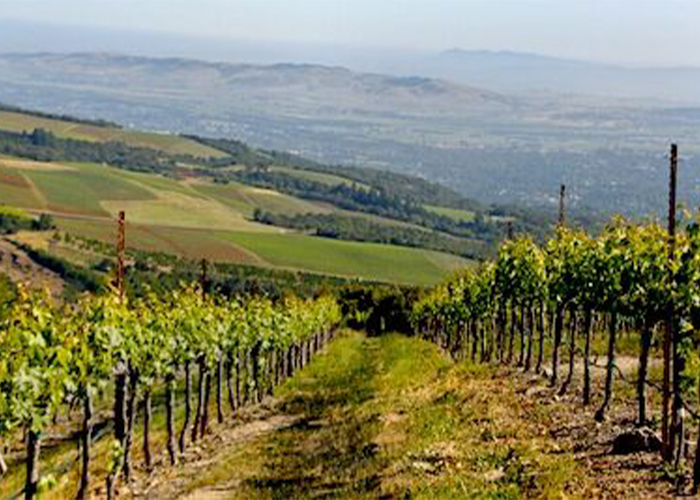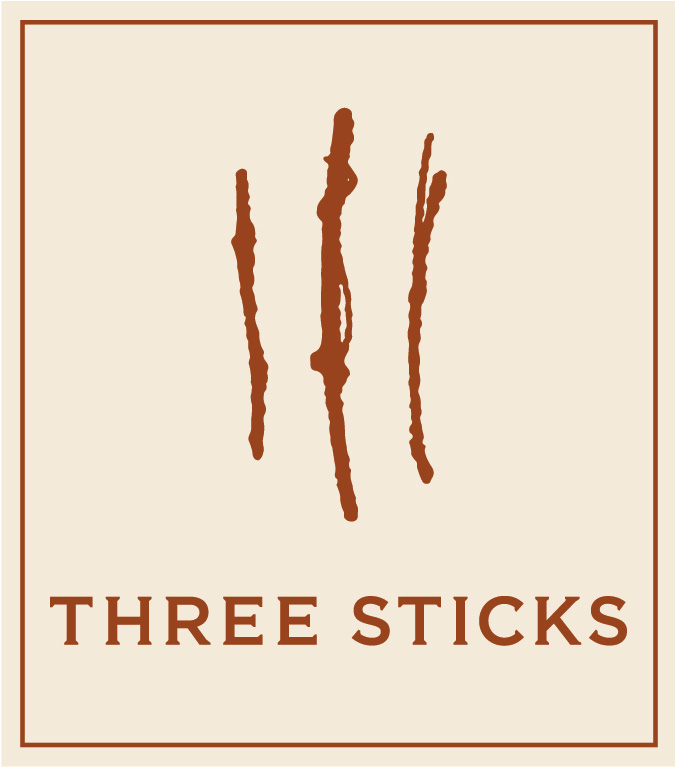Three Sticks Cabernet Sauvignon & the Art of Blending – Part II
In Part I of “Three Sticks Cabernet Sauvignon & the Art of Blending,” we focused on the process of selecting the final blend. Here, we took time to sit down with winemaker Don Van Staaveren to discuss the vineyard sources and the general characteristics of the blenders, specifically for our upcoming 2008 release and how they come together.
“Cabernet Sauvignon sets the stage for this wine, with dark berry, cherry, mocha, and a solid framework,” says Don, when discussing the blend’s overall components. “Merlot softens any unruly tannins, and gives us dark raspberry, violets, plum, milk chocolate flavors. Cabernet Franc is the sleeper, extending the flavors of the Cabernet Sauvignon with raspberries, blueberries, lavender, and spice. We bring in Petit Verdot to shore up the backbone with rawboned, dark chocolate, pomegranate, espresso, and dusty aromatics. Last but not least, Malbec adds a racy side with exotic, grapey, hibiscus, juicy, and additional color.”
With the flavor components considered above, Three Sticks does want to clarify that we do not follow a recipe. We believe that our wines must express the uniqueness of each vintage. Our goal is to make the best wine that each vintage gives us. Below we list our vineyard sources, and have selected them because of the consistent quality level they deliver. Once we bring the grapes into the winery, crush and ferment, we keep all the lots separate from de-stemming through aging. We can have as many as 9 to 10 different lots as potential candidates for our Cabernet Sauvignon blend.
We begin by individually tasting each lot and getting a sense of what their strong points might be. The first blend we make is the “kitchen sink” – a composite proportional blend of all the blending varieties. This gives us a feel of what we have to work with. Then, starting with our Mountain Terraces Cabernet Sauvignon, we decide how much of each Cabernet Sauvignon lot we want to use and develop our base blend. From there, we add or subtract lots or portions of lots to achieve the best “blend” possible from that vintage.
VINEYARD SOURCES
Mountain Terraces: 1,200-1,750 in elevation elevation, South x Southwest exposure, East-West row direction. Ryolitic/Basaltic soils. Planted in 1992. Mountain Terraces provides us with the core of the Cabernet Sauvignon used in this blend. This block is on a steeply terraced slope receiving all the benefits of the elements.
Bald Mountain: 1,700 foot elevation, Northwest x West exposure, East-West row direction, Basaltic soils – Red Hill loam – Sonoma volcanic: this is classic vineyard soil. This vineyard is dry farmed relying only on annual rainfall, deep roots and the water holding capacity of the soil. Planted in 2002. Bald Mountain is our Malbec source.
Alta Vista: 1,000 foot elevation, South exposure, Northeast-Southwest row direction, contoured to hillside. Ryolitic soil. Planted in 1992. Alta Vista is the home of a smaller portion of the Cabernet Sauvignon used in the blend. This Cabernet Sauvignon shows more integrated fruit with some brushy, cedary aroma.
Bismark Ranch: 1,800-2,200 feet in elevation, South exposure, Northeast-Southwest row direction predominately with one block East-West. Ryolitic tuff/Basaltic. Planted in 1998. We receive small amounts of Cabernet Sauvignon and Petit Verdot from Bismark. The Cabernet Sauvignon is lively and grippy with red fruits. The Petit Verdot provides dark aromas and concentrated fruit and can supplement the structure of the Cabernet Sauvignon.
THE END RESULT
“The critical issue is ripeness, which can mean different things for different people,” explains Don. “For Three Sticks, ripeness is an absence of green flavors – more along the lines of ripe fruit, jammy, without getting into pruney, raisiney flavor. We avoid high alcohol levels. We pick the grapes based more on physiological parameters more than analytical numbers. With the slopes predominately facing south and west, this gives us the best opportunity to get ripe fruit. We also find that mountain fruit provides more intensity because the vineyards are slow growing with long hang time.”
Though the 2008 vintage had its challenges in some California regions, we believe our hands-on vineyard management and benefit of high-elevation vineyards will deliver yet another exceptional wine from our portfolio. If you are not already on our Allocation List, and you would like to be notified in advance of the release of our 2008 Sonoma Valley Cabernet Sauvignon, please click here to sign up.


